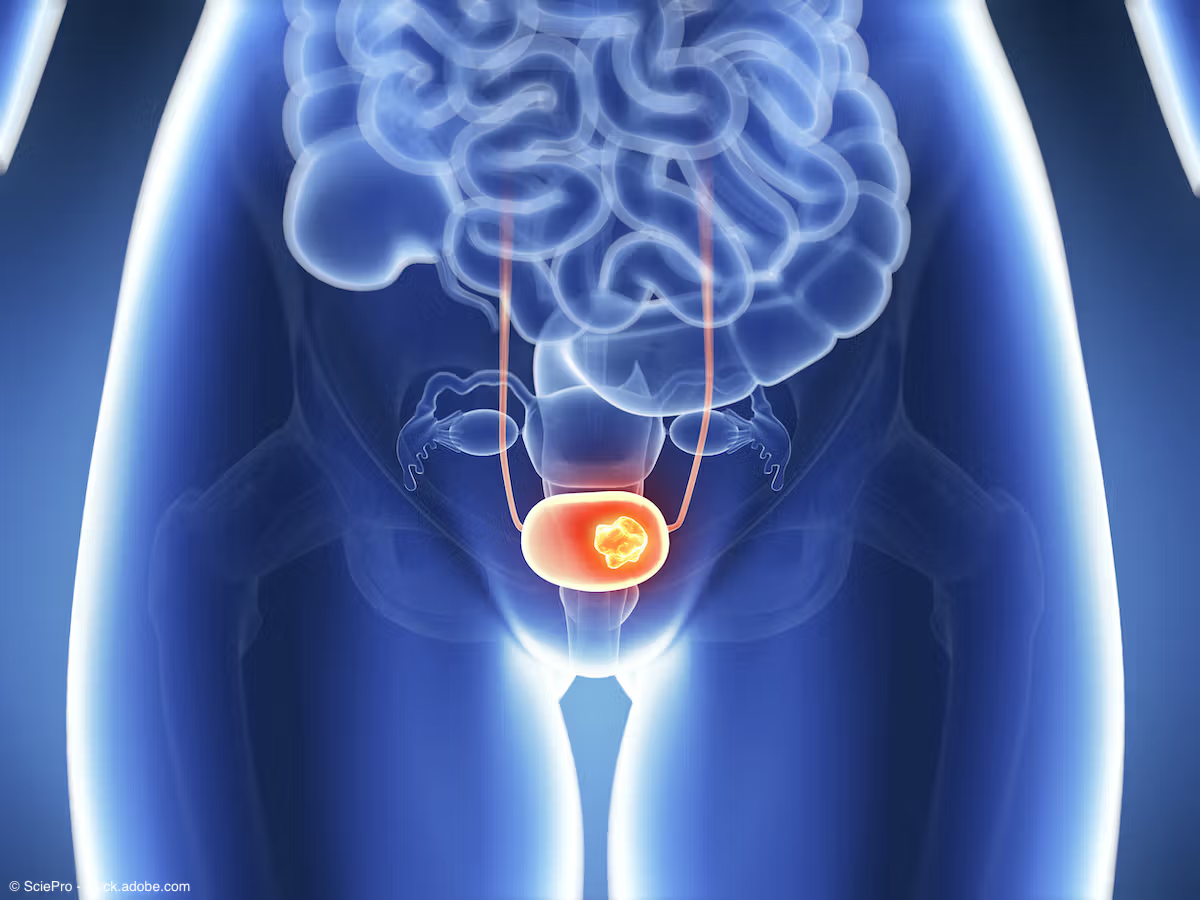Feature
Article
Urology Times Journal
Upper tract urothelial carcinoma: An in-depth review for urologists
Author(s):
Key Takeaways
- UTUC is a rare malignancy, primarily affecting older men, with smoking as a significant risk factor.
- Nephron-sparing approaches are gaining interest due to complications from nephroureterectomy and chemotherapy limitations.
"On-going innovation will continue to drive UTUC management forward, and with it will come on-going challenges of how to best study a relatively rare disease," write the authors.
Jesse Persily, MD

Persily is a urology resident at New York University Langone Health in New York, New York. Thakker is a urology resident at New York University Langone Health. Murray is a professor of urology at New York University Grossman School of Medicine.
Upper tract urothelial carcinoma (UTUC) is a relatively rare malignancy, with estimates ranging from 4000 to 7000 new cases annually in the US, representing only 5% to 10% of all urothelial carcinoma cases.1 This malignancy primarily affects older individuals (>70 years old) and is more common in men.2 As with other urothelial malignancies, smoking is a significant risk factor for UTUC, along with a personal history of bladder cancer, pelvic radiation exposure, and genetic predisposition (eg, Lynch syndrome).3
Sameer Thakker, MD

The gold-standard treatment for UTUC remains nephroureterectomy (NU) with bladder cuff excision, with or without retroperitoneal lymph node dissection.4 However, for several reasons, there has been a growing interest in nephron-sparing approaches to disease management. Contralateral recurrences are common, complicating management in patients who have undergone NU, leading to higher rates of chronic kidney disease in this population. Additionally, platinum-based chemotherapy, a common treatment for UTUC, is often precluded in patients with compromised renal function. UTUC also frequently occurs in patients with comorbidities impacting kidney function. Furthermore, nephron-sparing approaches are particularly indicated for patients with a pre-existing solitary kidney, severe renal dysfunction, or bilateral disease at diagnosis.
Nephron-Sparing Approaches: What Do the Guidelines Say?
Katie S. Murray, DO, MS

The safety and efficacy of nephron-sparing approaches depend on both patient and tumor characteristics. This risk-stratified approach to UTUC management was highlighted in the 2023 American Urological Association (AUA)/Society of Urologic Oncology UTUC guidelines.5 Following a standardized radiographic and endoscopic assessment, patients are risk-stratified as “low” or “high” risk for invasive disease, based on pathology grading. Patients are then further risk-stratified into favorableorunfavorable risk within each risk category using several additional disease characteristics, including cytology, radiographic findings, tumor appearance, and whether the lower urinary tract is involved. These guidelines offer specific recommendations regarding nephron-sparing therapies in each risk group, stating that these treatments are preferred for those with low-risk, favorable disease; may be offered to those with low-risk, unfavorable disease; and can rarely be used in select cases of high-risk, favorable disease. The European Association of Urology and National Comprehensive Cancer Network guidelines align with these recommendations, emphasizing nephron-sparing approaches for low-grade, low-volume tumors due to their lower metastatic potential.6,7
Endoscopic Management
Endoscopic management techniques include retrograde and antegrade ureteroscopy with laser ablation as well as percutaneous resection. These approaches have been shown to reduce morbidity compared with more invasive procedures.8 Though randomized controlled studies are difficult, there is evidence through observational studies that in select patients, cancer-specific survival is similar and renal functional outcomes are improved when comparing patients with endoscopically managed disease and those whose disease was managed with NU.9-11 Despite these benefits, endoscopic approaches can be technically challenging and may result in residual tumor due to limitations in visibility and access, particularly for larger or multifocal tumors. Consequently, for both low- and high-risk disease, repeat endoscopic evaluations within 3 months are recommended to ensure complete tumor eradication and manage any recurrences.5
Intraluminal chemotherapy, on the other hand, involves the use of chemotherapeutic agents such as mitomycin C or BCG, administered either antegrade through a nephrostomy tube, retrograde via a ureteral catheter, or intravesical with a double-J stent to facilitate reflux.12 The practice of using intraluminal chemotherapeutic adjuvants after ablation/resection is extrapolated from the bladder cancer literature, with only a small number of UTUC-specific studies. These studies have shown improved, though variable, outcomes with the use of adjuvant intraluminal mitomycin C.13 However, challenges, such as limited drug dwell time in the upper tract and potential for ureteral stenosis, complicate this approach.
Chemoablation With UGN-101 as an Alternative Approach
Recent advancements, namely the Olympus trial (NCT02793128) studying UGN-101 (Jelmyto), a reverse thermal gel, have shown promise in enhancing the efficacy of intraluminal chemotherapy.14 UGN-101 provides prolonged contact time with the tumor, leading to a complete response rate of 59% within 6 weeks and durable responses in 56% of patients. Despite these encouraging results, the risk of ureteral stenosis remained a significant concern after the initial publication of study findings.15
There are now emerging reports of real-world experiences with UGN-101. One report, a retrospective review of 15 institutions, described treatment for 132 patients. Most patients had biopsy-proven low-grade UTUC. Investigators found that the medication is most commonly administered in an antegrade fashion through a percutaneous nephrostomy tube.16 Interestingly, 43% of these patients had complete tumor ablation prior to UGN-101 administration, whereas another 38% had at least partial tumor ablation. Thus, in practice, UGN-101 appears to be utilized as both an agent for chemoablation and as an adjuvant chemotherapeutic agent. Overall, at first repeat endoscopic evaluation, investigators found a 69% disease-free rate when used in the adjuvant setting, and a 37% disease-free rate when used in the chemoablative setting. Small tumors (<1 cm) had a higher complete response rate compared with larger tumors (>3 cm). An additional real-world report focused on residual tumor size as well and did not find a difference in disease-free status based on tumor size prior to chemoablation.17 Importantly, one of the studies report a rate of clinically significant ureteral stenosis of 23%.16 These results are overall reassuring and add to the on-going conversation about the best approach to nephron-sparing management of UTUC.
Future Directions
Though chemoablation has been a major topic of conversation and has even made it into the AUA guidelines, there is on-going innovation in the UTUC space. For example, the Endoluminal Light Activated Treatment of UTUC (ENLIGHTED; NCT04620239) trial is a phase 3, open-label, single-arm, multicenter study of padeliporfin vascular-targeted photodynamic therapy for treatment of low-grade UTUC, which uses a photo-sensitizing drug light delivery system.18 The trial design includes an induction treatment period of 1 to 3 treatments at 4-week intervals until complete response or treatment failure. Those with a complete response undergo a maintenance period of ureteroscopy every 3 months, with additional photodynamic therapy treatment for recurrences. Interim results of the first 17 treated patients were presented at the 2024 American Society of Clinical Oncology Annual Meeting and showed an overall reasonable safety and efficacy profile.18 Specifically, 13 of 17 patients have completed the induction period, and 77% of those patients had a complete response, with the remainder having a partial response. Adverse events included flank pain, hypertension, renal colic, and urinary tract infection, and all resolved within a week. We excitedly await additional results and longer-term follow-up.
Conclusion
Advances in endoscopic technology and intraluminal drug delivery have begun to change the face of UTUC management from what was once a one-size-fits-all approach to a nuanced, risk-stratified approach based on patient and tumor characteristics. As nephron-sparing approaches have shifted from as-needed attempts at renal salvage to a primary recommendation in the guidelines, we will continue to accumulate data to assess long-term safety and efficacy compared with more radical approaches. On-going innovation will continue to drive UTUC management forward, and with it will come on-going challenges of how to best study a relatively rare disease, balancing the benefits of nephron-sparing methods with the need for rigorous follow-up and oncologic control.
REFERENCES
1. Siegel RL, Miller KD, Fuchs HE, Jemal A. Cancer statistics, 2022. CA Cancer J Clin. 2022;72(1):7-33. doi:10.3322/caac.21708
2. Shariat SF, Favaretto RL, Gupta A, et al. Gender differences in radical nephroureterectomy for upper tract urothelial carcinoma. World J Urol. 2011;29(4):481-486. doi:10.1007/s00345-010-0594-7
3. Wu J, Chen S, Wu X, et al. Trends of incidence and prognosis of upper tract urothelial carcinoma. Bosn J Basic Med Sci. 2021;21(5):607-619. doi:10.17305/bjbms.2020.5345
4. Margulis V, Shariat SF, Matin SF, et al; Upper Tract Urothelial Carcinoma Collaboration. Outcomes of radical nephroureterectomy: a series from the Upper Tract Urothelial Carcinoma Collaboration. Cancer. 2009;115(6):1224-1233. doi:10.1002/cncr.24135
5. Coleman JA, Clark PE, Bixler BR, et al. Diagnosis and management of non-metastatic upper tract urothelial carcinoma: AUA/SUO Guideline. J Urol. 2023;209(6):1071-1081. doi:10.1097/ju.0000000000003480
6. Rouprêt M, Seisen T, Birtle AJ, et al. European Association of Urology Guidelines on Upper Urinary Tract Urothelial Carcinoma: 2023 Update. Eur Urol. 2023;84(1):49-64. doi:10.1016/j.eururo.2023.03.013
7. Flaig TW, Spiess PE, Abern M, et al. NCCN Guidelines Insights: Bladder Cancer, Version 2.2022. J Natl Compr Canc Netw. 2022;20(8):866-878. doi:10.6004/jnccn.2022.0041
8. Kolawa A, D'Souza A, Tulpule V. Overview, diagnosis, and perioperative systemic therapy of upper tract urothelial carcinoma. Cancers (Basel). 2023;15(19):4813. doi:10.3390/cancers15194813
9. Grasso M, Fishman AI, Cohen J, Alexander B. Ureteroscopic and extirpative treatment of upper urinary tract urothelial carcinoma: a 15-year comprehensive review of 160 consecutive patients. BJU Int. 2012;110(11):1618-1626. doi:10.1111/j.1464-410X.2012.11066.x
10. Fajkovic H, Klatte T, Nagele U, et al. Results and outcomes after endoscopic treatment of upper urinary tract carcinoma: the Austrian experience. World J Urol. 2013;31(1):37-44. doi:10.1007/s00345-012-0948-4
11. Wen J, Ji ZG, Li HZ. Treatment of upper tract urothelial carcinoma with ureteroscopy and thulium laser: a retrospective single center study. BMC Cancer. 2018;18(1):196. doi:10.1186/s12885-018-4118-y
12. Khargi R, Connors C, Ricapito A, et al. Adjuvant intraluminal therapies for upper tract urothelial carcinoma. Transl Androl Urol. 2023;12(9):1439-1448. doi:10.21037/tau-23-35
13. Gallioli A, Boissier R, Territo A, et al. Adjuvant single-dose upper urinary tract instillation of mitomycin c after therapeutic ureteroscopy for upper tract urothelial carcinoma: a single-centre prospective non-randomized trial. J Endourol. 2020;34(5):573-580. doi:10.1089/end.2019.0750
14. Kleinmann N, Matin SF, Pierorazio PM, et al. Primary chemoablation of low-grade upper tract urothelial carcinoma using UGN-101, a mitomycin-containing reverse thermal gel (OLYMPUS): an open-label, single-arm, phase 3 trial. Lancet Oncol. 2020;21(6):776-785. doi:10.1016/s1470-2045(20)30147-9
15. Matin SF, Pierorazio PM, Kleinmann N, et al. Durability of response to primary chemoablation of low-grade upper tract urothelial carcinoma using UGN-101, a mitomycin-containing reverse thermal gel: OLYMPUS trial final report. J Urol. 2022;207(4):779-788. doi:10.1097/ju.0000000000002350
16. Woldu SL, Labbate C, Murray KS, et al. Early experience with UGN-101 for the treatment of upper tract urothelial cancer — a multicenter evaluation of practice patterns and outcomes. Urol Oncol. 2023;41(3):147.e15-147.e21. doi:10.1016/j.urolonc.2022.10.029
17. Kaimakliotis HZ, Tachibana I, Woldu S, et al. The ablative effect of mitomycin reverse thermal gel: expanding the role for nephron preservation therapy in low grade upper tract urothelial carcinoma. Urol Oncol. 2023;41(9):387.e1-387.e7. doi:10.1016/j.urolonc.2023.04.010
18. Margulis V, Kaufman Jr. RP, Marcq G, et al. ENLIGHTED phase 3 study: efficacy and safety of padeliporfin vascular targeted photodynamic therapy (VTP) for treatment of low-grade upper tract urothelial cancer (LG UTUC). J Clin Oncol. 2024;42(suppl 16):TPS4622. doi:10.1200/JCO.2024.42.16_suppl.TPS4622
































